The study highlights the role of community health workers in educating patients and their families to adhere to medication and control risk factors.
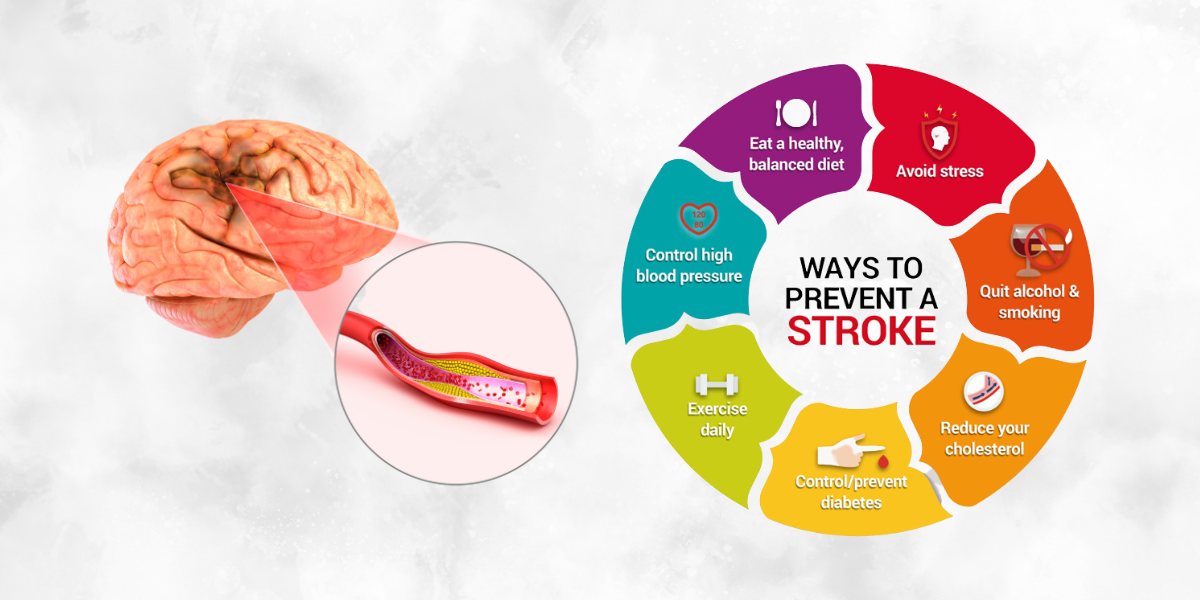
Medication adherence and risk factor monitoring are key aspects of prevention of a new stroke. (Commons/Union Ministry of Health and Family Welfare)
When it comes to stroke or “brain attack”, the harsh reality is that once you have it, the chance of having another one is higher.
A recent study carried out by researchers from the Sree Chitra Tirunal Institute for Medical Sciences and Technology (SCTIMST) in Thiruvananthapuram, Kerala, uncovered that individuals who have experienced a stroke are not enthusiastic about undergoing follow-up treatment.
The study was a joint initiative of the Comprehensive Stroke Care Programme (CSCP) at the Sree Chitra Tirunal Institute for Medical Sciences and Technology (SCTIMST), Achutha Menon Centre for Health Science Studies (AMCHSS) of SCTIMST, and the Non-Communicable Disease (NCD) Division of the Department of Health and Family Welfare, Kerala.
A stroke happens when the blood flow to the brain stops. As it is the blood that carries oxygen and nutrients to brain cells, which in turn helps the brain work well, any blockage in its flow affects brain function.
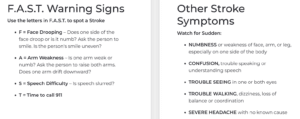
The acronym FAST is used to remember stroke symptoms, but there are other symptoms too. (National Stroke Association, US)
The result? Brain cells start to die within minutes, which leads to lasting brain damage, long-term disability, or even death. It requires emergency care.
Symptoms of a stroke include:
Kerala is a likely candidate for a high stroke disease burden, being a state with a high prevalence of high blood pressure, cardiovascular diseases, diabetes, and Covid-19 infection — all of which are considered risk factors for stroke — among the population.
One of the ways to address this is to train and educate patient, their family members, and community health workers (CHWs) on the risk factors that could trigger another stroke.
But for that, an understanding of how the state fares in post-stroke care is needed.
Coming against this backdrop was a study carried out among stroke survivors in the rural health blocks of Kollam district.
“This study might be the first of its kind in the country,” Dr PN Sylaja, head of the Comprehensive Stroke Care Programme (CSCP) at the Sree Chitra Tirunal Institute for Medical Sciences and Technology (SCTIMST) and principal investigator of the study, told South First.
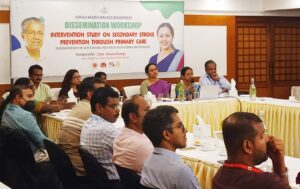
A workshop organised by the health department and SCTIMST on secondary stroke prevention at Thiruvananthapuram on 3 August. (Supplied)
“What makes it special is that we conducted a community-based study on post-stroke care, examined factors like medication adherence and risk factor monitoring, and then recommended ways to prevent another stroke,” she explained.
As part of the study, a total of 896 patients’ post-stroke care was analysed for a year.
Though the study report is yet to be published in a medical journal, the findings were handed over to the Kerala government on 3 August.
It is learnt that based on this study, changes will be made in the state’s stroke management programme — Stroke Identification Rehabilitation Awareness and Stabilisation Programme (SIRAS).
According to Dr Bipin Gopal, state nodal officer, NCD Division, the reality of new stroke prevention in the community is being understood better, thanks to this study.
As per the study, only 35 percent (313) of the 896 stroke survivors in the community checked their blood pressure and blood sugar in the last six months. Even after they were educated, only another 20 percent did their blood investigations.
“Post discharge from the hospital after a stroke, the continuation of treatment in the community is very poor,” Dr Bipin informed South First.
He added, “As stroke survivors are at a 5-15 percent risk of getting the next stroke in a year, reducing the risk factors is paramount.”
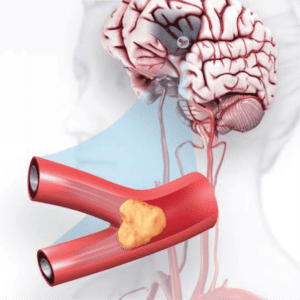
A pictorial representation of blockage in one of the arteries to the brain. (American Stroke Association)
According to him, unless this risk is reduced, stroke patients will experience repeated strokes, thereby increasing the disease burden in the community. Dr Bipin further highlighted that recurrent strokes can be prevented through medication adherence and better lifestyle modifications to control blood pressure, blood sugar, and cholesterol.
It was here that the study made use of community health workers (CHW).
“The plan was to train and educate the CHWs. They, in turn, will educate patients and their families to ensure that medication is taken regularly and their risk factors are controlled,” said Dr Sylaja.
As part of the study, 1,400 CHWs in the Kollam district were educated on stroke care and risk factor control. The CHWs included junior public health nurses, junior health inspectors, health supervisors, palliative care nurses, Accredited Social Health Activists (ASHAs), and primary care physicians.
“The training was conducted before the launch of the study. Then, all the stroke survivors in the rural health blocks of Kollam district were identified by CHWs. They educated the patients and their caregivers on medication adherence and risk factor control,” explained Dr Bipin.
The investigators identified visible changes in patients’ attitudes. “After the intervention, medication adherence improved from 70 percent to 85 percent, and tobacco use and alcohol reduced. The use of text messages to the patients on risk factor control was also employed,” read an excerpt from the report to the government.
The study came out with the observation that medication adherence improved after intervention. Also, risk factor monitoring improved after educating the patients and their families.
However, the study also found that patients with disability after a stroke were not getting any effective rehabilitation.
As per sources, a total of six recommendations were made to the government, considering the study.
Before this study, the three centres that joined forces had highlighted the importance of community health workers, as their intervention helped in controlling risk factors and behavioural change among stroke patients.
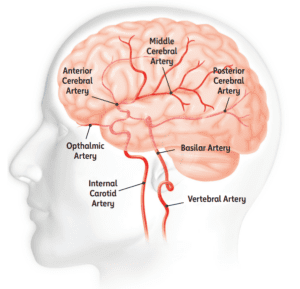
Various arteries to the brain, which supply blood to specific areas of the brain. (American Stroke Association)
It was in 2017-18 that a study on “Secondary prevention of stroke by a primary health care approach: An open-label cluster-randomized trial” was conducted. The findings of the study were published in 2020 in the Journal of Clinical Neuroscience.
The 2017-18 study analysed 234 stroke patients of SCTIMST who were residing in the rural areas of Thiruvananthapuram district.
The study stressed the need for further research to understand the challenges faced by stroke survivors in obtaining optimal medical therapy, sustaining lifestyle changes, and obtaining appropriate medical care.
It also highlighted that a successfully developed CHW-based intervention is likely to be of interest and high value in multiple settings, including parts of India and other low and middle-income countries where stroke remains a significant public health problem.
Incidentally, the findings of the community-based study corroborate with the Indian Council of Medical Research’s (ICMR) Secondary Prevention by Structured Semi-Interactive Stroke Prevention Package in India (SPRINT India) Trial.
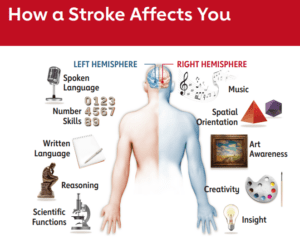
A stroke on the left side of the brain affects the right side of the body and vice versa. (American Stroke Association)
A report published in February 2023 on the trial highlighted that after a stroke, about 15-20 percent of the patients in India develop another stroke (recurrence).
Expectedly, the main reasons for recurrence were discontinuing medicines, uncontrolled blood pressure and blood sugar, continuing with smoking, drinking alcohol, eating unhealthy, and other habits.
The trial also revealed that a structured semi-interactive stroke prevention package improved lifestyle behavioural factors and medication adherence, which might have long-term benefits.
From Kerala, seven hospitals are part of the network and that includes SCTIMST.
The undeniable fact is that one in four people are in danger of stroke in their lifetime. Other than the medical risk factors for stroke, there are lifestyle risk factors — like being overweight or obese, physical inactivity, using tobacco, and abusing drugs and alcohol — that could result in a stroke.
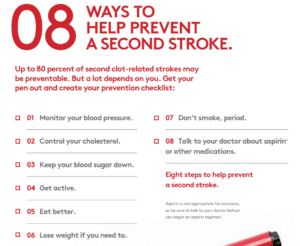
A checklist prepared by the American Stroke Association to prevent a new stroke. (American Stroke Association)
According to the ICMR, in India, stroke is the third leading cause of death and the sixth leading cause of disability. A report published by it in 2021, as part of the National Stroke Registry Programme, highlighted hypertension as the leading risk factor for stroke. It is followed by diabetes and current tobacco use.
When it comes to Kerala, the situation was surmised well by former state health minister KK Shailaja in 2020.
In her message on World Stroke Day (29 October), Shailaja stated that cases of stroke have been increasing in the state and more young people are being affected.
According to her, even people under the age of 40 suffer from strokes and many have hypertension and cardiovascular diseases.
Cut to 2023. An ongoing public health survey identified (as of 30 August) 15,92,806 patients with hypertension, among a population of those who are above the age of 30. 12,88,975 patients were diagnosed with diabetes. It was in May 2022 that the population-based screening for lifestyle diseases among those above the age of 30 began.
It is likely that these staggering stats influenced current state Health Minister Veena George to announce that the Health Department has been asked to chalk out a special project to strengthen the stroke care facilities available in 14 districts.
The minister revealed this after receiving the findings of the community-based study on post-stroke care on 3 August.
She also assured that directions have been given to the concerned officials to ensure that CHWs visit stroke survivors so that they get post-stroke care from NCD clinics in the state.

Jul 26, 2024

Jul 26, 2024

Jul 26, 2024

Jul 26, 2024

Jul 26, 2024

Jul 26, 2024